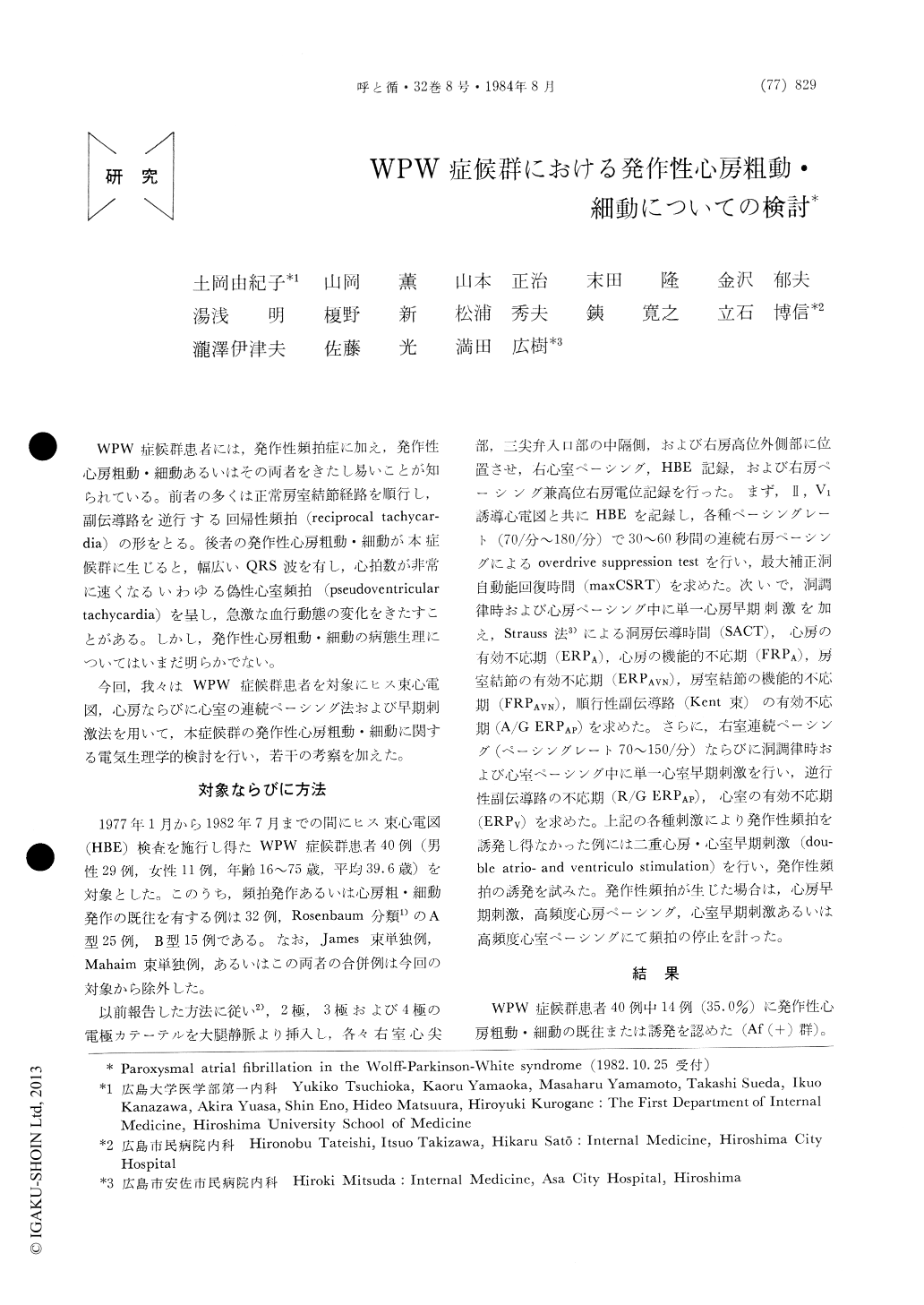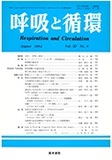Japanese
English
- 有料閲覧
- Abstract 文献概要
- 1ページ目 Look Inside
WPW症候群患者には,発作性頻拍症に加え,発作性心房粗動・細動あるいはその両者をきたし易いことが知られている。前者の多くは正常房室結節経路を順行し,副伝導路を逆行する回帰性頻拍(reciprocal tachycar—dia)の形をとる。後者の発作性心房粗動・細動が本症候群に生じると,幅広いQRS波を有し,心拍数が非常に速くなるいわゆる偽性心室頻拍(pseudovcntriculartachycardia)を呈し,急激な血行動態の変化をきたすことがある。しかし,発作性心房粗動・細動の病態生理についてはいまだ明らかでない。
今回,我々はWPW症候群患者を対象にヒス束心電図,心房ならびに心室の連続ペーシング法および早期刺激法を用いて,本症候群の発作性心房粗動・細動に関する電気生理学的検討を行い,若干の考察を加え得た。
Clinical and electrophysiological examination were performed in 40 patients with WPW syndrome, using His bundle recording, rapid atrial pacing, rapid ventricular pacing, premature atrial and premature ventricular stimulation technique. 14 patients had episodes or induced atrial flutter and/or atrial fibrillation (af (+) group), and 26 patients did not have atrial flutter or atrial fibrillation (af (-) group).
There were no significant changes in clinical data, sinus node function, incidence rate of re-entrant tachycardia, the ventricular rate during reentrant tachycardia, and the refractory periods of the atrium, the atrioventricular node and the accessory pathway in both groups. The incidence rate of A type WPW syndrome was 87.5% in af (+) group and 50.0% in af (-) groups (p<0.05).
The duration of the effective refractory periods of the accessory pathway was found to correlate with the shortest RR interval during documented or induced atrial fibrillation. In five patients the effective refractory periods of the accessory pathway could not be determined because of the atrial refractoriness. In 4 of these 5 patients, the shortest RR interval during atrial fibrillation was below 200 msec and demonstrated pseudoventricular tachycardia. Hence, precise electrophysiological studies and cotrol of the tachycardia are necessary in patients with short refractory periods associated with atrial fibrillation and WPW syndrome.

Copyright © 1984, Igaku-Shoin Ltd. All rights reserved.


